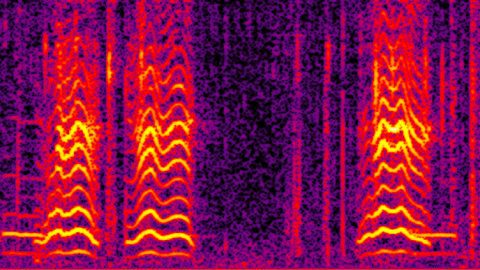Prying Open an Elephant Dictionary
Below are some examples of the many types of calls that forest elephants use to communicate with one another. Notice that sometimes you can see an elephant open its mouth to vocalize, but often it is very difficult to tell who is calling and who is listening!
Rumbles, trumpets, and screams
In the clip below, a sitatunga (antelope) jumps out of a hollow tree off-camera and startles the Pia and Noor families. As they huddle together, they rumble, trumpet, and scream. Pia is about 40 years old here and with her fourth off-spring, 2-year-old Pia V. Noor is about 38 and with her fourth off-spring as well, 2-year-old Noor V.
Calling for mom
This unknown infant appears lost! He rumbles and screams as he searches. He also smells the air and listens for something.
Alarm Calls
This video features the Penelope family and the Gonya family. Gonya II pushes Penny, who is only a few weeks old, and Penny’s scream gets the attention of Penny’s family. First a couple of Gonya’s family arrive (Gonya II also has a young infant just behind her), then the Penelope’s rush over and group around Penny. There are a variety of alarm calls, trumpets, and rumbling throughout the ordeal.
A wayward infant is rescued
Battle Cry
A young adult male advances towards Gabin, an older male (golden yellow). You will see the younger male flap his ears as he gives a soft rumble, then he runs at Gabin in challenge. The two males clash and probably it is the younger male who roars as he gets shoved away by Gabin. Then Gabin gives two rumbles, each time accompanied by flaps of his ears.
To Trunk or not to Trunk
It turns out that elephants can actually speak with two voices! They can either talk through their mouths or from the end of their trunks, and the resulting rumbles are different and might be used for different types of communication. Although elephants produce sounds in much the same way as we do, using their vocal folds to generate the source (called “fundamental”) frequency and then modifying the sound’s structure by filtering it through the mouth and nose, the nasal passage is something else when it comes to an elephant! The trunk gives elephants an extra six feet of filter to use if they want to. The filter lets an animal concentrate sound energy in different parts of the call structure, and the longer the filter, the lower in frequency (tone) those areas of concentration can be. Scientists speculate that nasal rumbles may be particularly important for long distance communication.
Call and Response
The repertoire of elephant calls appears to be similar in all three species, but has been best studied in savannah elephants. Based on behavioral context, there are dozens of call types: of these, the majority are made by females and function in group coordination or reproduction. The “fission-fusion” social system of elephants is characterized by the splitting and coming together of variously related groups of individuals organized around adult females, meaning these matriarchal groups are constantly meeting up and then separating from each other. Powerful, low-frequency calls enable females to identify one another acoustically and thus coordinate with subgroups foraging separately — even when miles apart. Playback experiments demonstrated that free-ranging savannah elephants respond to one another’s calls over at least two and probably four kilometers during daylight hours. This type of acoustic coordination might be particularly critical in forest elephants as subgroups move through the dense rain forest, out of sight of one another.
It will be difficult indeed, if not impossible, to perform similar playback experiments on forest elephants. Generating low frequency sound requires a really big sub-woofer speaker, a big amplifier to drive the mechanism, and mega-batteries to run the amplifier. Together these components are not only physically large, but really heavy. But the real difficulty in the rainforest is knowing where the subject is relative to the speaker, and being able to observe the subject’s response to the playback. We have estimated the potential communication distance by using an acoustic array to locate where the elephant was calling from and then measuring how fast the sounds attenuate with distance. In the forest, under conditions of average background noise, elephants can probably communicate only up to about 800 meters away from each other! But when the forest is quiet, we estimated distances of close to 5 km. Do our elephants choose their window of opportunity to call to one another?




